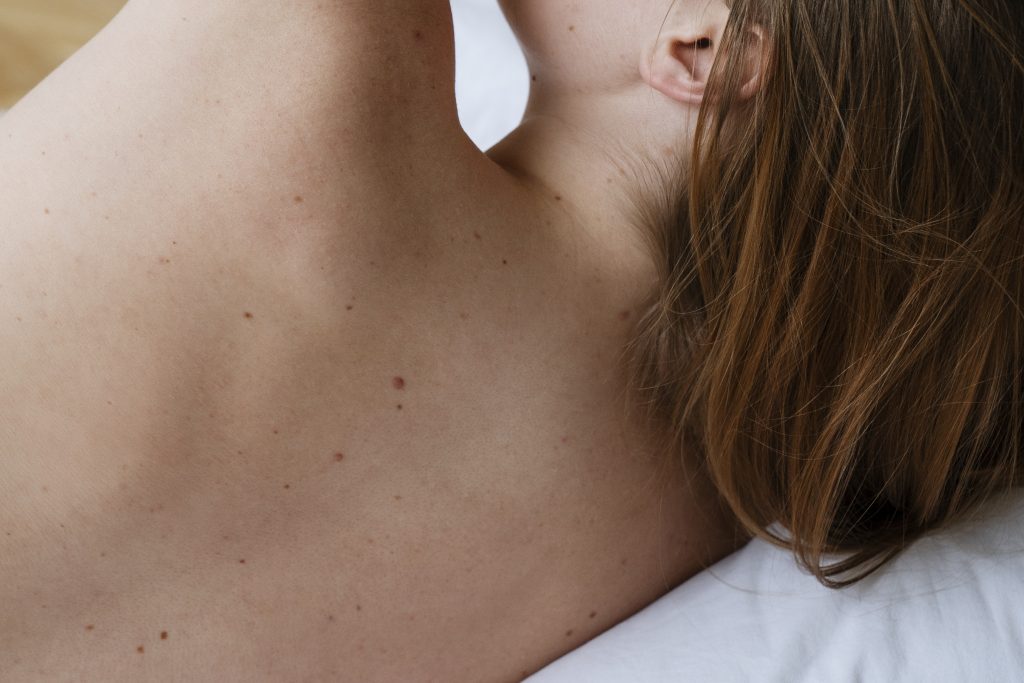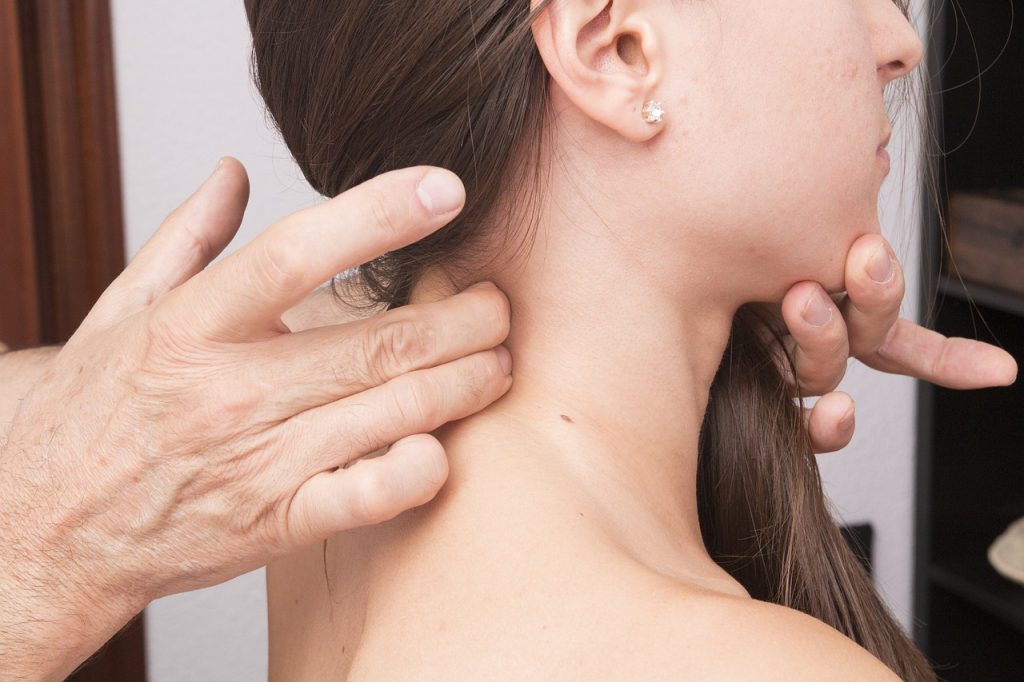Table of Contents
ToggleIntroduction
Back acne, commonly known as “bacne,” can be a frustrating and confidence-diminishing condition. However, with the right approach and consistent effort, it’s possible to effectively clear stubborn back acne and achieve smoother, clearer skin.
In this article, we’ll explore the top 10 remedies recommended by experts for combating stubborn back acne fast.
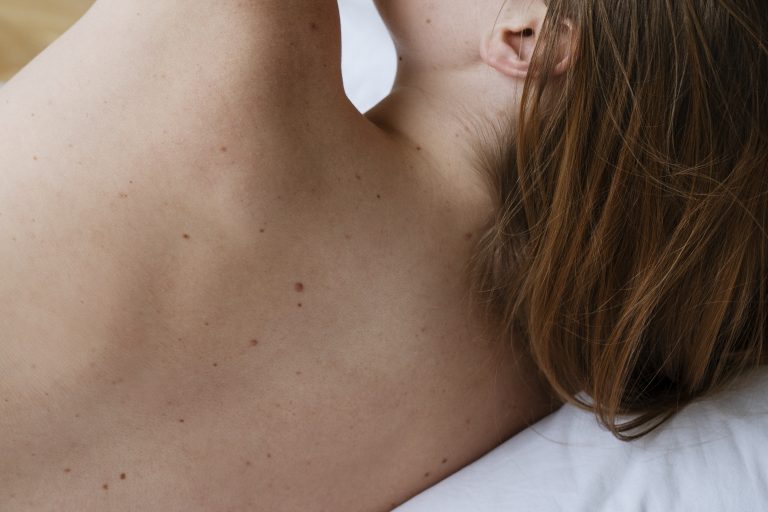
Understanding Back Acne
Back acne occurs when hair follicles become clogged with excess oil, dead skin cells, and bacteria. Factors such as hormonal changes, genetics, sweat, and friction from clothing can contribute to the development of back acne. Understanding the root causes of back acne or stubborn back acne is crucial for choosing the most effective treatment methods.
Top 10 Remedies for Clearing Stubborn Back Acne Fast
- Proper Hygiene and Skincare Routine
- Tea Tree Oil
- Aloe Vera
- Apple Cider Vinegar
- Exfoliation
- Topical Treatments
- Benzoyl Peroxide
- Salicylic Acid
- Dietary Changes
- Stress Management
1. Proper Hygiene and Skincare Routine
Maintaining a proper hygiene and skincare routine is essential for managing and preventing back acne. This includes daily cleansing with a gentle, non-comedogenic cleanser to remove excess oil, dead skin cells, and bacteria.
Exfoliation 2-3 times per week can help unclog pores and prevent acne breakouts. Additionally, using topical treatments containing ingredients like benzoyl peroxide or salicylic acid can target acne-causing bacteria and reduce inflammation.
Maintaining proper hygiene and skincare routine can help manage and prevent back acne.

Here's comprehensive routine
Gentle Cleansing: Use a gentle, fragrance-free cleanser specifically formulated for acne-prone skin. Wash your back twice a day, in the morning and before bed, to remove excess oil, sweat, and dirt that can clog pores and contribute to back acne.
Exfoliation: Incorporate a gentle exfoliating scrub or body wash with salicylic acid into your routine to help remove dead skin cells and unclog pores. However, be cautious not to over-exfoliate, as it can irritate the skin and exacerbate back acne.
Topical Treatments: Apply topical treatments containing ingredients like benzoyl peroxide or salicylic acid to target existing acne and prevent new breakouts. These treatments can help reduce inflammation, kill acne-causing bacteria, and unclog pores. Apply them after cleansing and exfoliating, focusing on affected areas.
Moisturize: Even if you have oily or acne-prone skin, it’s essential to moisturize to maintain skin barrier function and prevent excessive dryness, which can trigger increased oil production. Choose a lightweight, non-comedogenic moisturizer suitable for acne-prone skin its good for back acne.
Sun Protection: Apply a broad-spectrum sunscreen with SPF 30 or higher to protect your skin from harmful UV rays, especially if you’re using acne treatments that can increase sensitivity to the sun. Look for oil-free or non-comedogenic formulas to avoid clogging pores.
Avoid Irritants: Avoid using harsh or abrasive products on your back acne, such as loofahs or rough scrubbing brushes, as they can further irritate the skin and worsen back acne. Also, steer clear of products containing fragrances or dyes, which can cause irritation and inflammation.
Shower After Exercise: Sweat and oil buildup during exercise can contribute to back acne. Shower as soon as possible after working out to remove sweat, dirt, and bacteria from your skin. Use a gentle cleanser and pat your skin dry with a clean towel afterward.
Clean Clothing and Bedding: Regularly wash clothing, towels, and bedding to remove sweat, oil, and bacteria that can transfer to your skin and exacerbate acne. Opt for breathable fabrics like cotton and avoid tight-fitting clothing that can trap moisture and irritate the skin.
Healthy Lifestyle: Maintain a healthy lifestyle by eating a balanced diet, staying hydrated, getting enough sleep, and managing stress. These factors can influence hormone levels and overall skin health, potentially impacting back acne.
Consult a Dermatologist: If over-the-counter treatments and proper skincare routines aren’t effectively managing your back acne, consider consulting a dermatologist. They can recommend prescription medications or procedures tailored to your specific skin needs.
Consistency is key when it comes to managing back acne, so stick to your skincare routine and be patient as it may take time to see significant improvement.
2. Tea Tree Oil
Tea tree oil is a natural remedy with powerful antibacterial and anti-inflammatory properties. Applying diluted tea tree oil directly to the affected areas of the back can help reduce acne breakouts and soothe inflammation.
Certainly! Tea tree oil is often used as a natural remedy for acne due to its antibacterial and anti-inflammatory properties.
Here's a simple solution you can make at home to help with back acne
Ingredients:
10-12 drops of tea tree oil
1/4 cup of water
- A small spray bottle
- Instructions:
- Start by pouring the water into the spray bottle.
- Add the tea tree oil drops into the water.
- Close the spray bottle tightly and shake it well to ensure the oil is mixed thoroughly with the water
- After showering, when your back is clean, spray the solution onto the affected areas of your back.
- Allow it to air dry on your skin. There’s no need to rinse it off.
- You can use this solution twice a day, preferably after your morning and evening showers.
Remember to do a patch test before applying tea tree oil directly to your skin, especially if you have sensitive skin, to ensure you don’t have any adverse reactions. Additionally, if you experience any irritation, discontinue use immediately and consult a dermatologist.
3. Aloe Vera
Aloe vera is known for its soothing and healing properties, making it an effective remedy for back acne. Applying pure aloe vera gel to the back can help reduce inflammation and promote healing of back acne lesions.
Certainly! Tea tree oil is often used as a natural remedy for acne due to its antibacterial and anti-inflammatory properties.
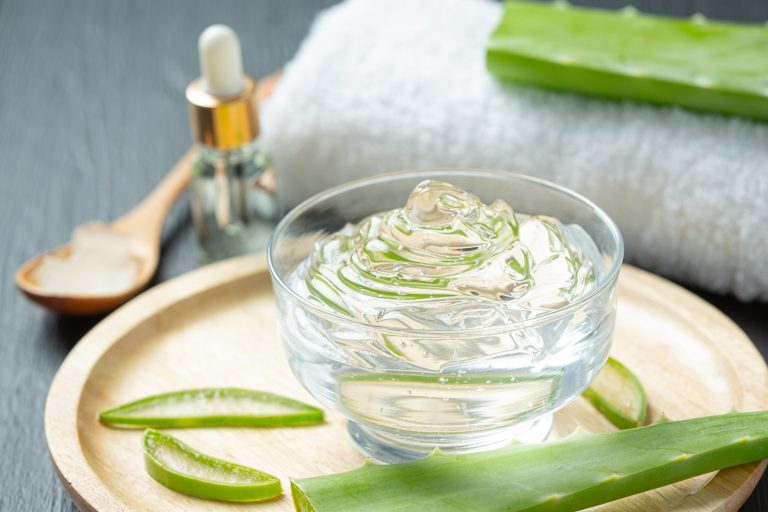
Here's a simple solution you can make at home to help with back acne
Ingredients:
- 10-12 drops of tea tree oil
- 1/4 cup of water
- A small spray bottle
- Instructions:
- Start by pouring the water into the spray bottle.
- Add the tea tree oil drops into the water.
- Close the spray bottle tightly and shake it well to ensure the oil is mixed thoroughly with the water.
- After showering, when your back is clean, spray the solution onto the affected areas of your back.
- Allow it to air dry on your skin. There’s no need to rinse it off.
- You can use this solution twice a day, preferably after your morning and evening showers.
Remember to do a patch test before applying tea tree oil directly to your skin, especially if you have sensitive skin, to ensure you don’t have any adverse reactions. Additionally, if you experience any irritation, discontinue use immediately and consult a dermatologist.
4. Apple Cider Vinegar
Apple cider vinegar has antimicrobial properties that can help kill acne-causing bacteria and balance the skin’s pH levels. Diluting apple cider vinegar with water and applying it to the back acne using a cotton ball can help reduce acne breakouts.
Apple cider vinegar (ACV) is another popular natural remedy for acne because of its antimicrobial properties and ability to balance the skin’s pH levels.
Here's how you can use it for back acne
Ingredients:
- 1 part raw, unfiltered apple cider vinegar
- 3 parts water
- A small spray bottle or cotton pads
- Instructions:
- Dilute the apple cider vinegar with water in a ratio of 1:3. For example, if you’re using 1 tablespoon of ACV, mix it with 3 tablespoons of water.
- Pour the diluted ACV into a spray bottle or soak a few cotton pads in the solution.
- After showering, when your back is clean, spray the diluted ACV onto the affected areas or apply it using the soaked cotton pads.
- Allow it to air dry on your skin. There’s no need to rinse it off.
- You can use this solution once or twice a day, preferably after your morning and evening showers.
It’s important to patch test the diluted ACV on a small area of your skin before applying it to larger areas, especially if you have sensitive skin, as it can cause irritation for some individuals. If you experience any discomfort or irritation, discontinue use and consult a dermatologist.
5. Exfoliation
Exfoliation can be helpful for back acne as it removes dead skin cells and unclogs pores, preventing breakouts.
Exfoliation is a great way to treat back acne because it helps remove dead skin and unclog pores, thus reducing the risk of back acne breakouts.
You can cleanse your back using a physical exfoliant, such as a scrub or brush, or an exfoliant, such as products containing salicylic acid or glycolic acid. But be careful, because too much scrubbing can irritate the skin and lead to back acne.
Exfoliate your back 2 times a week and then use a moisturizer to keep your skin hydrated and prevent dryness. If you have severe or persistent acne, consult a dermatologist before adding exfoliation to your skin care routine.
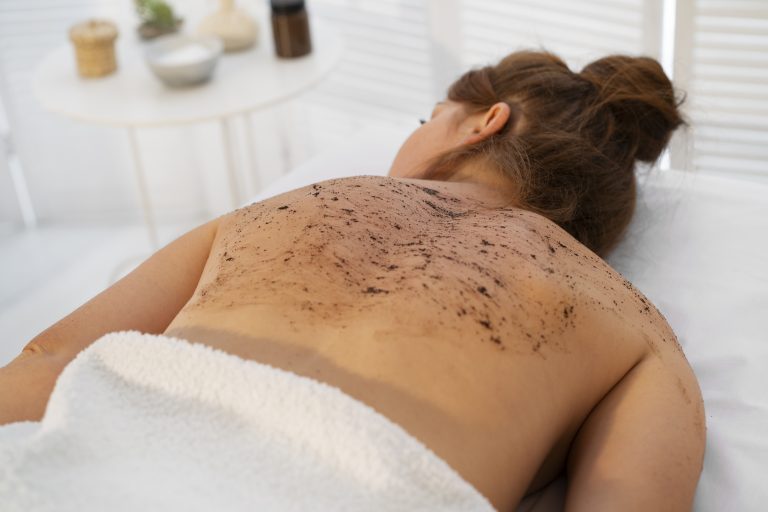
Here's a simple exfoliation solution you can use
Ingredients:
- 1/4 cup of granulated sugar or sea salt
- 1/4 cup of coconut oil or olive oil
- Optional: 5-10 drops of tea tree oil (for its antibacterial properties)
Instructions:
- In a clean bowl, mix the granulated sugar or sea salt with the coconut oil or olive oil until well combined. Adjust the ratio if needed to achieve a thick paste-like consistency.
- If using, add 5-10 drops of tea tree oil to the mixture and stir well.
- Take a shower to wet your back and make sure your skin is clean.
- Gently massage the exfoliation solution onto your back using circular motions for about 5-10 minutes. Focus on areas with acne but be gentle to avoid irritating your skin.
- Rinse off the exfoliation solution with warm water thoroughly.
- Pat your back dry with a clean towel.
- Follow up with a moisturizer suitable for acne-prone skin, if needed.
You can use this exfoliation solution once or twice a week, depending on your skin’s sensitivity. Avoid over-exfoliating, as it can strip your skin of its natural oils and cause further irritation. If you experience any discomfort or irritation, discontinue use and consult a dermatologist.
6. Topical treatments
Benzoyl peroxide is a widely used topical treatment for back acne due to its effectiveness in combating acne-causing bacteria and reducing inflammation.
Available in various forms such as gels, creams, and washes, benzoyl peroxide works by penetrating the skin’s pores and eliminating the bacteria that contribute to acne formation. When applied to the back, benzoyl peroxide helps to unclog pores, reduce oiliness, and prevent new breakouts from occurring.
It’s important to start with a lower concentration to minimize the risk of skin irritation, gradually increasing as tolerated.
Consistent use of benzoyl peroxide can lead to significant improvement in back acne, but it’s essential to follow the instructions provided and consult a dermatologist if any adverse reactions occur.
7. Salicylic Acid
Salicylic acid is a beta hydroxy acid (BHA) that works effectively for treating back acne by targeting multiple factors contributing to its development.
Here's a detailed explanation of how salicylic acid works for back acn
Exfoliation: Salicylic acid is oil-soluble, which means it can penetrate deep into the pores of the skin. Once inside the pores, salicylic acid works to dissolve the bonds between dead skin cells, facilitating their removal.
This exfoliating action helps to slough off dead skin cells from the surface of the skin and within the pores, preventing them from accumulating and clogging the pores.
Unclogging Pores: By exfoliating the skin, salicylic acid effectively unclogs pores that are congested with a combination of dead skin cells, oil (sebum), and bacteria. Clogged pores are a primary factor in the development of acne, as they provide an ideal environment for the proliferation of acne-causing bacteria and the formation of acne lesions.
Oil Regulation: Salicylic acid also helps to regulate oil production in the skin. Excessive oil production can contribute to clogged pores and acne breakouts. By reducing oiliness, salicylic acid helps to prevent the pores from becoming congested and minimizes the likelihood of new acne lesions forming.
Anti-inflammatory Properties: In addition to its exfoliating and pore-clearing actions, salicylic acid exhibits anti-inflammatory properties. Acne is often accompanied by inflammation, which can manifest as redness, swelling, and tenderness.
Salicylic acid helps to soothe inflammation and reduce the redness and swelling associated with acne, promoting a calmer and clearer complexion.
Prevention of New Breakouts: Regular use of salicylic acid can help to prevent new acne breakouts from occurring by keeping the pores clear of debris and bacteria. By incorporating salicylic acid into a daily skincare routine, individuals can maintain clearer and healthier-looking skin on their backs and reduce the frequency and severity of acne flare-ups.
Overall, salicylic acid is a versatile and effective treatment for back acne due to its ability to exfoliate the skin, unclog pores, regulate oil production, and reduce inflammation.
Consistent use of salicylic acid as part of a comprehensive skincare regimen can help individuals achieve clearer, smoother, and more radiant skin on their backs.
8. Dietary Changes
Dietary changes can play an important role in managing acne by addressing the underlying cause and improving skin health
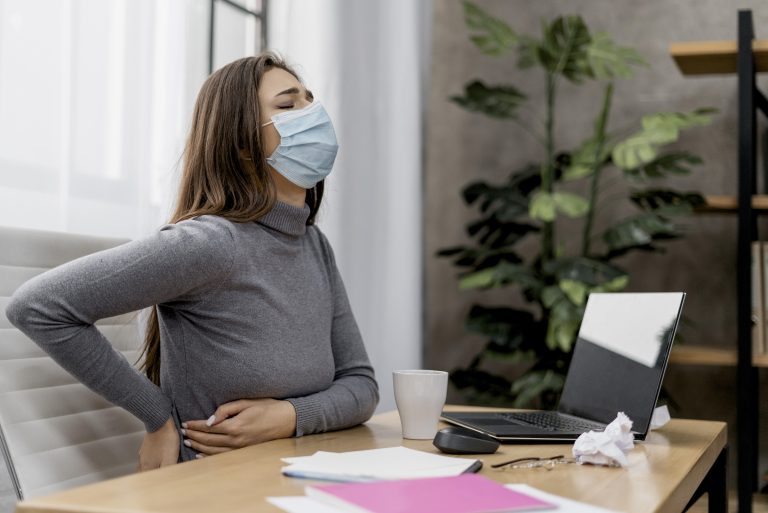
Here are some nutritional tips to consider
- Avoid dairy products: Some research shows that dairy products, especially those with high hormone levels like milk, can make acne worse.
- Consider reducing your dairy intake or switching to alternatives such as almond milk or soy milk. and insulin levels, which can cause acne flare-ups.
- Instead, focus on whole foods like fruits, vegetables, whole grains and lean meats. Include omega-3 sources in your diet, such as fatty fish (salmon, mackerel, sardines), flaxseeds, chia seeds and walnuts.
- It removes toxins by moisturizing the skin, thus purifying it from toxins.
- If you exercise regularly or live in hot weather, try to drink at least 8 glasses of water or more per day. and promotes skin healing and regeneration.
- Include more antioxidant-rich foods in your diet, such as fruits, green vegetables, carrots and bell peppers.
- Limit your consumption of caffeinated beverages such as coffee and tea, and consume alcohol in moderation.
- Pay attention to whether your skin reacts to certain foods and consider eliminating triggers such as gluten, soy or allergens.
- Lean protein and fat.
- A healthy diet provides essential nutrients that support healthy skin and can help reduce acne and pimples.
- If you’re considering changing your diet, consult a doctor or registered dietitian for personalized guidance and recommendations to fit your specific needs and health goals.
10. Stress Management
Stress management can help with acne because stress can cause hormonal changes and inflammation in the body, which can lead to acne formation.
Here are some stress management techniques that can help improve acne
- Practice relaxation techniques using relaxation techniques such as deep breathing, meditation, Yoga, or muscle strengthening can help reduce stress and increase mindfulness.
- Plan on at least 30 minutes of moderate exercise, such as brisk walking, jogging, cycling or swimming, on most days of the week. more and more acne.
- Aim for 7-9 hours of good sleep each night and create a consistent sleep schedule.
- Choose decaffeinated drinks or herbal teas. or things that bring joy and rest. Talking to someone you trust can help relieve stress and anxiety.
- Focusing on the present moment helps reduce stress and promote inner peace.
- Guidance and strategies for effective stress management. But it’s important to remember that managing stress is a gradual process, and the key to seeing results over time is consistency.
Conclusion
Getting rid of acne requires proper hygiene, skin care and treatment. By incorporating these best treatments into your skin care routine and making lifestyle changes such as eating a healthy diet and managing stress, you can effectively prevent acne recurrence and get better skin.
Here are potential side effects and precautions for each treatment for managing back acne:
1.Proper Hygiene and Skincare Routine
Side Effects: Over-cleansing or using harsh products can strip the skin of its natural oils, leading to dryness, irritation, and potentially exacerbating acne.
Precautions: Use gentle cleansers and avoid scrubbing too vigorously. Moisturize after cleansing to maintain skin hydration.
2. Tea Tree Oil
Side Effects: Tea tree oil may cause skin irritation, redness, or allergic reactions in some individuals, especially those with sensitive skin. It can also be drying if used in excess.
Precautions: Always dilute tea tree oil with a carrier oil before applying to the skin. Before applying the product to larger areas, it’s a good idea to do a patch test on a small area of skin first. If you experience any irritation, it’s best to stop using the product altogether.
3. Aloe Vera
Side Effects: Aloe vera is generally well-tolerated, but in rare cases, it may cause allergic reactions or skin irritation.
Precautions: Check for any allergic reactions by applying a small amount of aloe vera gel to a small area of skin before using it on larger areas. Discontinue use if irritation occurs.
4. Apple Cider Vinegar
Side Effects: Undiluted apple cider vinegar can cause skin irritation, redness, and burning sensations. It may also disrupt the skin’s natural pH balance.
Precautions: Always dilute apple cider vinegar with water before applying it to the skin. Before applying it to larger areas, it’s important to perform a patch test to check for any adverse reactions. Avoid using it on broken or sensitive skin.
5. Exfoliation
Side Effects: Over-exfoliation can lead to skin irritation, redness, and inflammation. It may also exacerbate acne if not done gently.
Precautions: Use gentle exfoliants and avoid scrubbing too vigorously. Limit exfoliation to 1-2 times per week to prevent over-exfoliation.
6. Topical Treatments
Side Effects: Common side effects of topical treatments like benzoyl peroxide and salicylic acid include dryness, redness, peeling, and irritation. They may also increase sensitivity to sunlight.
Precautions: Start with a lower concentration and gradually increase as tolerated. Make sure to use sunscreen during the day to shield your skin from the harmful effects of the sun. Discontinue use if severe irritation occurs.
7. Benzoyl Peroxide
Side Effects: Benzoyl peroxide can cause dryness, peeling, redness, and irritation. It may also bleach hair and fabrics.
Precautions: Start with a lower concentration to minimize irritation. Avoid contact with hair and clothing, as it may bleach them. Use sunscreen during the day, as benzoyl peroxide can increase sensitivity to sunlight.
8. Salicylic Acid
Side Effects: Salicylic acid may cause dryness, peeling, redness, and irritation, especially in higher concentrations.
Precautions: Start with a lower concentration and gradually increase as tolerated. Avoid using salicylic acid on broken or irritated skin. Don’t forget to apply sunscreen during the day to safeguard your skin from sun damage.
9. Dietary Changes
Side Effects: Dietary changes may not have direct side effects, but sudden changes or extreme restrictions may affect overall health and nutrient intake.
Precautions: Make gradual changes to your diet and ensure you’re still getting essential nutrients. Consult a healthcare professional before making significant dietary changes, especially if you have any underlying health conditions.
10. Stress Management
Side Effects: Chronic stress can impact overall health and may contribute to various health issues, including acne flare-ups.
Precautions: Practice stress management techniques regularly to maintain overall well-being. Seek support from a healthcare professional if stress becomes overwhelming and affects daily functioning.
By being aware of potential side effects and taking necessary precautions, you can safely incorporate these treatments into your skincare routine and lifestyle to effectively manage back acne.
Read more about.. Get Rid of Pimples Overnight!
Definitely! Here are alternative options for individuals with sensitive skin or allergies for each medication
Proper hygiene and regular skin care:
Alternative: Use gentle, fragrance-free cleansers and moisturizers specially formulated for sensitive skin. Look for products labeled hypoallergenic or suitable for sensitive skin.
Tea tree oil:
Alternative: Instead of tea tree oil, consider using witch hazel as a natural alternative. Witch hazel has similar antibacterial properties and is generally well tolerated by sensitive skin.
Aloe Vera:
Alternative: For individuals allergic to aloe vera, consider using chamomile extract or calendula extract. Both have soothing properties and are gentle on sensitive skin.
Apple vinegar:
Alternative: Replace apple cider vinegar with white or rice vinegar, which are less acidic and may be better tolerated by sensitive skin. Alternatively, try diluted lemon juice as a natural astringent.
Exfoliation:
Alternative: Instead of physical exfoliants like scrubs or brushes, opt for chemical exfoliants containing gentle ingredients like lactic acid or fruit enzymes. They are less abrasive and suitable for sensitive skin.
Topical treatment:
Alternative: Look for topical treatments formulated specifically for sensitive skin, such as products containing colloidal oatmeal, niacinamide, or ceramides. These ingredients help soothe and hydrate the skin without irritation.
Benzoyl Peroxide:
Alternative: For individuals sensitive to benzoyl peroxide, consider using sulfur-based stains or products containing azelaic acid. These ingredients have antibacterial properties and are less irritating to sensitive skin.
Salicylic acid:
Alternative: Replace salicylic acid with mandelic acid or beta hydroxy acid (BHA) derived from willow bark extract. These alternatives offer similar exfoliation benefits with less potential for irritation.
Dietary changes:
Alternative: Instead of making drastic dietary changes, focus on eliminating specific trigger foods known to worsen acne, such as dairy or foods with a high glycemic index. Explore different sources of nutrients to keep your diet well-balanced.
Stress management:
Alternative: Explore stress relief techniques that suit your individual preferences and sensibilities, such as gentle yoga, meditation, or mindfulness practices. Try out various activities until you discover what suits you best.
By considering these alternative options, individuals with sensitive skin or allergies can still effectively manage back acne while minimizing the risk of irritation or adverse reactions.
Always patch test new products and consult a dermatologist if you have any concerns or persistent skin problems.
Do you want to know more about acne? click here
FAQs
Can I use tea tree oil directly on my back acne?
How often should I exfoliate my back if I have acne?
Are there any dietary changes that can help improve back acne?
Can stress worsen back acne?
What should I do if over-the-counter products don’t improve my back acne?
More about back acne

